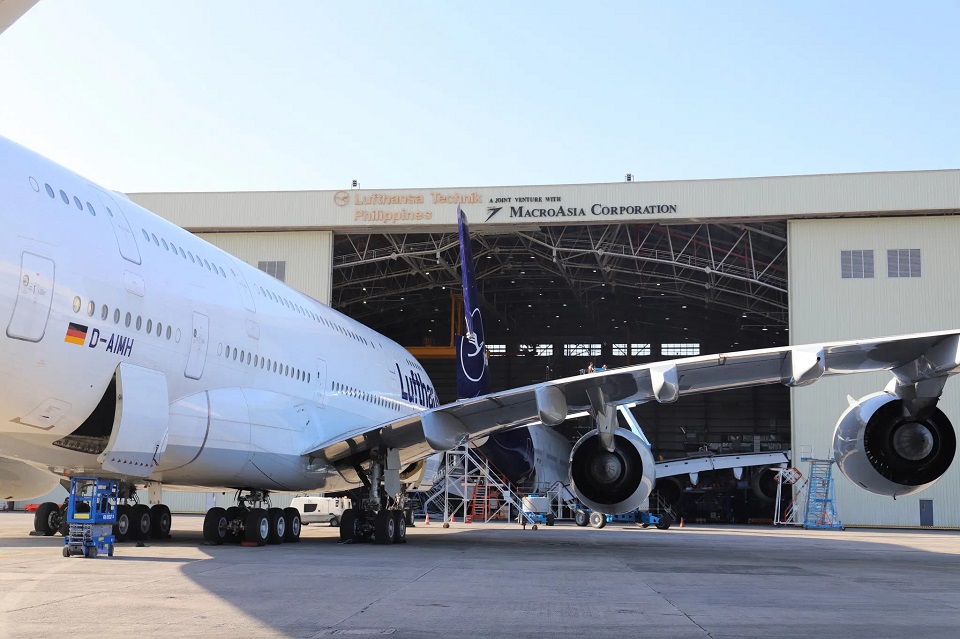Civil Aviation
Lufthansa completes its first twelve-year check on an A380

Lufthansa Technik Philippines (LTP) in Manila has successfully completed the twelve-year check on an Airbus A380 for the first time in its history, enabling Lufthansa Airlines to welcome back the largest passenger aircraft in the world to its fleet.
Last week, the A380 registered D-AIMC completed the largest repair package on its maintenance schedule without incident, and it is already back in Germany.
The planned twelve-year examination entails far more thorough inspections of the aircraft structure than the less comprehensive three- or six-year tests that Lufthansa Airlines’ first four reactivated Airbus A380s also received at LTP. During “Mike Charlie’s” stay in Manila, all monuments from the two passenger decks, including more than 500 passenger seats, had to be taken down and then put back in place to allow for proper access. As part of the inspection, a number of major aircraft parts were also entirely replaced or temporarily dismantled.
Complete replacement of all landing gear assemblies
The entire replacement of the landing gear, which on an Airbus A380 comprises of five separate gear assemblies totaling 22 wheels, is one of the milestones of every twelve-year checkup. These extremely stressed parts, which have to support a maximum take-off weight of up to 560 tonnes on a fully loaded A380, have outlived their planned service life after twelve years of operation. The experts at Lufthansa Technik Landing Gear Services (LTLGS) in London are refurbishing the four main landing gear components to nearly new condition, while the manufacturer of the nose landing gear is doing an overhaul to ensure that this does not also mean the end of the components’ overall livespan.
Engines make way for detailed inspections
The removal of the A380’s four Rolls-Royce Trent 900 engines from its wings is equally impressive. As part of the twelve-year check, these will be removed temporarily to enable the specialists to do more thorough structural checks of the engine mounts and wings. With a dry weight of almost six metric tonnes and an air intake diameter of over three metres, the engines themselves will only receive little maintenance in accordance with their remaining service life. The LTP team was required to do adjustments, such as putting into effect all airworthiness directives (ADs) given by the manufacturer Airbus over the lengthy period of the aircraft’s non-operation, in addition to the planned work packages of a twelve-year check.
For the largest passenger aircraft in the world, these overhauls, or base maintenance as it is technically called, are still in high demand. Now that the pandemic has ended, many airlines have returned this type of aircraft, which is still quite popular with customers, to service in order to meet the tremendous surge in demand for air travel. LTP’s customer currently includes Lufthansa Airlines as well as four other A380 operators. That means even with the addition of a third overhaul line for the type last year, the company’s capacities will be nearly completely employed for many years to come.







